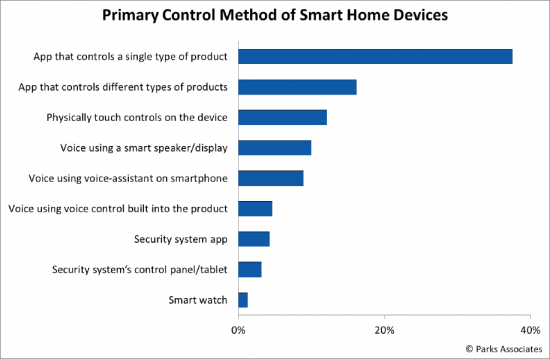
|
市場調査レポート
商品コード
1020009
相互運用性と生成AI:次世代のスマートホームUIInteroperability & Generative AI: Next Generation Smart Home UI |
||||||
|
|||||||
| 相互運用性と生成AI:次世代のスマートホームUI |
|
出版日: 2023年10月20日
発行: Parks Associates
ページ情報: 英文
納期: 即日から翌営業日
|
- 全表示
- 概要
- 図表
- 目次
スマートホームのユニファイドエクスペリエンスは消費者にとって利便性と価値をもたらしますが、断片化と相互運用性の問題がスマートホームエコシステムの参入事業者を悩ませています。
当レポートでは、次世代のスマートホームユーザーインターフェースの市場を調査し、スマートホームのコントロールとユーザーインターフェースに対する消費者の好み、相互運用性とMatterなどの標準規格の動向、生成AIがスマートホームのコントロールに与える影響の予測、米国のスマートホームデバイス設置台数の5カ年予測などをまとめています。
サンプルビュー

目次
総論
コントロールと相互運用性の情勢
- ホームコントロールとオートメーションの進歩
- スマートホームデバイスの所有率は5年間で2倍に
- スマートホームエコシステムが拡大
- スマートホームの抑制要因:価値・プライバシー・相互運用性
- 供給サイドの勢いを高める近接技術
市場の展望:コントロール・データセキュリティ・生成AI
- インターフェースの多様性は今後も続き、ユーザーエクスペリエンスは向上
- Matter:デバイスのセットアップとセキュリティに取り組む
- Matter:エコシステムの溝を橋渡しする
- 生成AIによるユーザーエクスペリエンスの差別化
市場の展望:5カ年予測
- 市場の障壁
- 市場促進要因
影響と推奨事項
- Matter:ロードマップに載せるが、長期にわたる展開の計画を
- サービスプロバイダーはMatterの諸刃の剣に対応する必要がある
- 付加価値と差別化のための生成AIの実装
付録
List of Figures
- Average Number of Connected Devices per US Internet Household
- Home Automation Standards, X10 to Matter
- Smart Home Device Ownership, 2015-2023
- Opportunities and Threats of Smart Home User Experience Stakeholders
- Smart Home Device Purchase Inhibitors
- Matter and Generative AI: Countervailing Market Forces
- Primary Control Method of Smart Home Devices
- Top 3 Reasons for Smart Home Device Returns
- Smart Home Products - Data Privacy and Security Concerns
- Must Used Smart Home Device Control Platform
- Ecosystem Integration as a Purchase Consideration for Smart Home Products
- Smart Speaker or Smart Display Ownership, 2016-2023
- Smart Home Devices: Perception of Affordability
- US Forecast - Core Smart Home Product Unit Sales, 2019-2027
- US Forecast - Core Smart home Product Revenues, 2019-2027
A unified smart home experience is the holy grail of convenience and value for consumers, but fragmentation and interoperability issues plague the smart home ecosystem. This report evaluates consumer preferences for smart home control and UI, trends in interoperability and standards, such as Matter, and the expected impact of generative AI on smart home controls. It includes a 5-year forecast of the installed base of smart home devices in the United States.
SAMPLE VIEW

Key Questions:
- Why will Matter and generative AI shift interface strategies for device makers and service providers?
- What limits surround Matter's ability to improve the smart home experience?
- How will the emergence of generative AI affect today's voice-driven control agents?
- How can device makers differentiate using emerging user interface features?
- How will broadening device suites affect service provider competition?
ANALYST INSIGHT:
"There is hope for a more unified smart home experience as two disruptions enter the industry. The first is Matter. The second is generative AI," said Ross Rubin, Sr. Contributing Analyst, Parks Associates.
Table of Contents
Bottom line
Control and Interoperability Landscape
- Progress in home control and automation
- Smart home device ownership doubles in 5 years
- The smart home ecosystem grows broader
- Smart home inhibitors: value, privacy, interoperability
- Adjacencies build supply-side momentum
Market Outlook: Controls, Data Security, Generative AI
- While interface diversity will continue, user experience will improve
- Matter tackles device setup and security
- Matter bridges ecosystem chasms
- Differentiating User Experience via Generative AI
Market Outlook: 5 Year Forecast
- Market Barriers
- Market Drivers
Implications & Recommendations
- Put Matter on the roadmap but plan for a lengthy rollout.
- Service providers must respond to Matter's double-edged sword
- Implement generative AI to add value and differentiate


